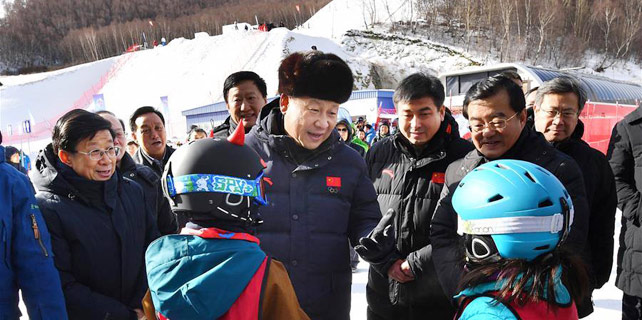Deepening reforms the only way forward for China's economy
BEIJING - The latest data point to a firming Chinese economy, but the progress of reforms will be key for sustained strength and containing risk.
Two separate gauges on Wednesday showed China's factory activity rose faster than expected in February, with the official manufacturing purchasing managers' index staying in expansionary territory for seven consecutive months.
Following strong rebounds in January's exports and imports and the producer price index rising to a five-year high, the latest figures once again dispelled worries of a hard landing in the world's second-largest economy.
Yet it is not a time for celebration as the economic outlook is still clouded by uncertainties, putting policy makers to the test.
The economy grew 6.7 percent in 2016, within the government's target range set for the year. But the expansion was, to some extent, lifted by the government's pro-growth fiscal and monetary policies.
Monetary easing aimed to counter a deceleration of investment that had dragged on the economy, as property developers pulled back on construction amid an overhang of unsold houses and as factories slowed expansion in the face of falling sales.
New loans extended by Chinese banks had for three consecutive years surpassed those in 2009, when the country went on a spending spree to help the economy weather the adverse impacts of the global financial meltdown.
This created the conditions to fuel an economic rebound, but fanned asset bubbles that, if left unchecked, will threaten the country's financial stability and the broader economy.
Rising corporate and households leverage levels, though their risks remain within control, underscore the urgency of accelerating market-oriented reforms.
Infrastructure investment posted strong growth, underpinned by fiscal support, but private-sector investment - which usually accounts for more than 60 percent of China's total fixed-asset investment and contributes more than 80 percent of jobs - remained weak.
A volatile international economic environment also poses challenges. Rising protectionism is exacerbating the already dim trade outlook, while any move by the US Fed will have a strong effect on the yuan's exchange rate and China's capital outflows.
As the economic fundamentals remain sound while growth momentum continues to improve, the government should refrain from additional easing policies while focusing more on longer-term gains through wide-ranging reforms.
Traditional growth engines, which are losing steam, can regain momentum in the long run only if the country patiently pushes ahead with reforms to foster innovation and encourage industrial upgrading.
Vitality of new growth drivers can be unleashed only if the country continues efforts to streamline administrative procedures and scale back government controls.
Financial risks can be diffused only if the country accelerates reforms in the sector to further regulate market operations, crack down on illegal practices and channel credit to support the real economy.
Private firms can prosper only if the country advances reforms of state-owned enterprises and opens up more sectors to private investment.
Moreover, the impact of protectionism can be mitigated only if the country continues to promote reforms while further opening up its economy to the outside world.
Though these changes are painful at times and their benefits take time to manifest, they are the only way to carry the economy forward.






















